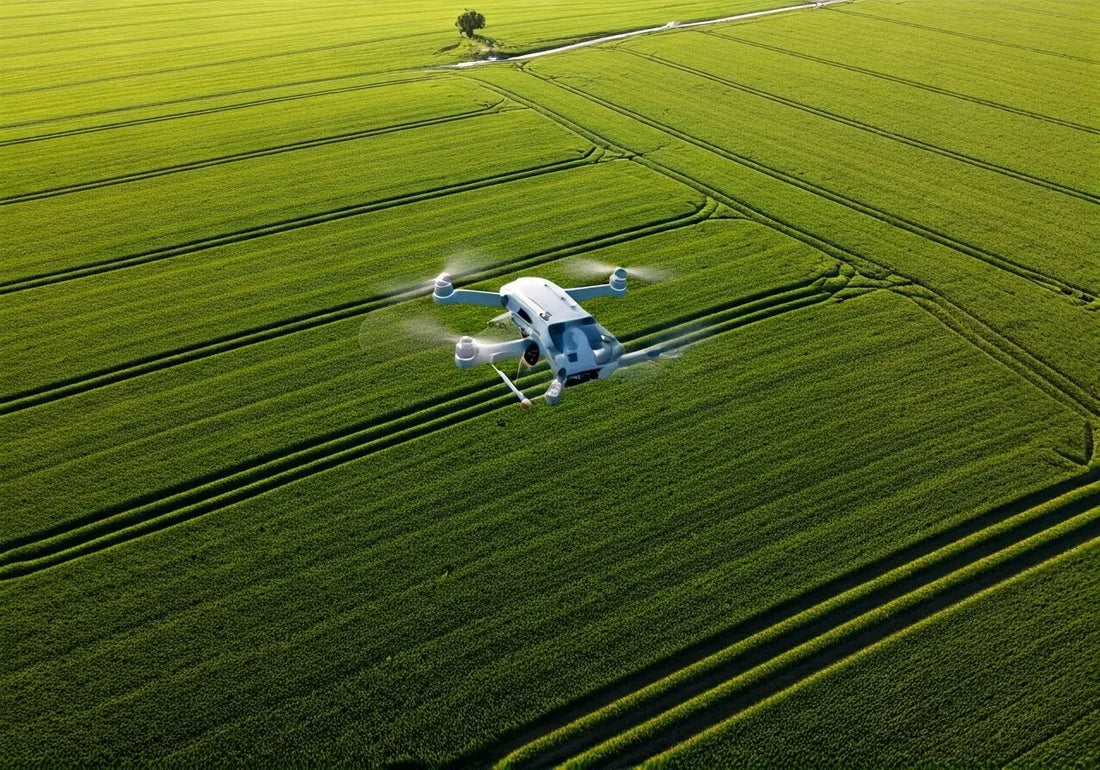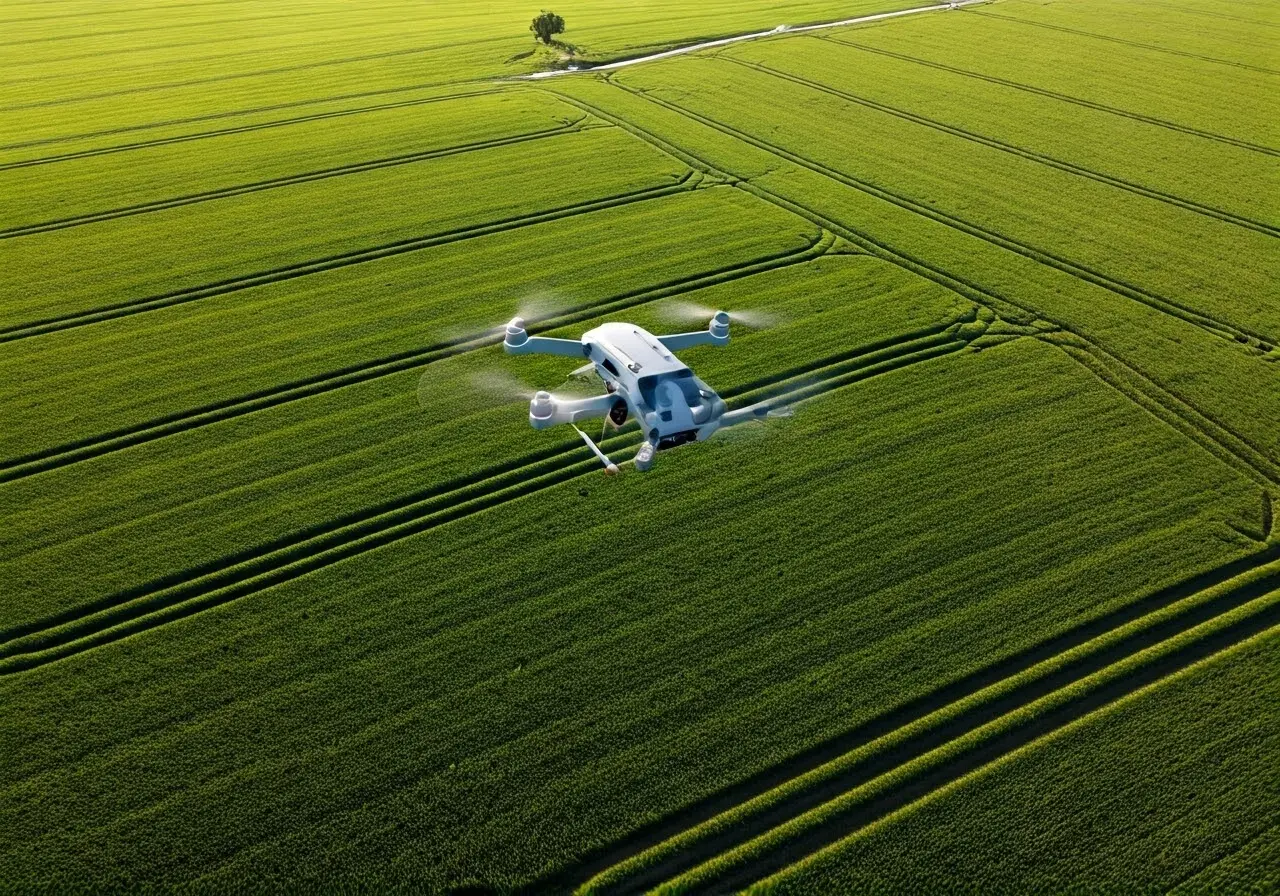
15 Benefits of Using Drone-Based Agriculture for Your Farm
Share
In the ever-evolving world of agriculture, drone technology has emerged as a game-changer, offering numerous benefits for modern farmers. With the ability to provide real-time data and streamline various farming processes, drone-based agriculture is revolutionizing the way we cultivate our crops. Let’s explore the myriad advantages and understand why integrating drones into your farming practices could be the best decision you make for your farm.
1. Enhanced Crop Monitoring
Drones equipped with advanced imaging technologies offer farmers unparalleled insights into their crops. By performing regular flyovers, they can detect early signs of disease, pest infestations, and nutritional deficiencies. This proactive approach allows farmers to take measures before small issues evolve into significant problems. The aerial perspective gained from drones is something unattainable with traditional methods. A farmer can save both time and resources by focusing on specific trouble areas identified through drone surveillance.
Incorporating drone technology into crop monitoring offers a new dimension of data collection. For instance, imaging and sensors enable precise tracking of crop health, improving decision-making and leading to better yield outcomes. Furthermore, drones can navigate harsh terrains and monitor large areas swiftly, something that was previously time-consuming and labor-intensive. With accurate, real-time intel, strategic interventions can be made effectively.
2. Accurate Soil Analysis
By using drones to gather data on soil properties, farmers can optimize fertilizer applications, improving crop health and reducing waste. This precise approach ensures that nutrients are applied exactly where and when needed. Traditional soil analysis methods can often be slow and limited to specific sampling areas, but drones change the game by allowing rapid evaluation of entire fields. This adaptability leads to more sustainable farming with reduced environmental footprint by minimizing over-application of chemical fertilizers.
For those interested in advanced soil management, drones provide a cost-effective solution. They gather metrics like soil moisture, texture, and composition, critical factors in optimizing farm practices. This information empowers farmers to make data-supported decisions regarding irrigation, seeding, and harvesting timelines. As a result, crops are healthier and yields are more consistent.
3. Efficient Planting Strategies
Drone technology enables farmers to plan and execute planting with greater precision, leading to more organized and productive fields. This results in better crop spacing and ultimately, higher yields. Instead of relying on guesswork or traditional planting schedules, data from drones can help pinpoint the best times for seeding or transplanting. This optimized scheduling aligns with weather forecasts and soil conditions, maximizing the growth potential of every plant.
The ability to analyze field conditions in real-time through drone imagery drastically reduces planting errors. Proper plant spacing and alignment are crucial in achieving uniform growth and maturation, leading to more consistent and predictable production levels. By embracing a high-tech approach to planting, errors are minimized, and crop health is maximized.
4. Cost-Effective Surveillance
By replacing traditional surveillance methods with drones, farmers have access to a more economical way of overseeing their crops, ensuring that every inch of the field is under constant watch. For small and large farms alike, this is crucial as it reduces the need for manual checks and the associated labor costs. Drones can cover vast distances far quicker than any worker on foot, providing comprehensive coverage.
The economic impact is noticeable when considering the long-term savings associated with drone deployments. By investing in drone technology, farmers experience lower operational costs, facilitating increased profitability over time. Further adjustments and investment in drones lead to optimized surveillance techniques, vital for maintaining crop health and performance.
5. Reduced Labor Requirements
Drones can handle numerous tasks that would otherwise require manual labor, allowing farmers to allocate human resources more efficiently and save on labor costs. From monitoring crops to delivering pesticides, drones have broad applications that alleviate the demand on farm staff. Leveraging this technology not only cuts operational costs but also increases worker safety by reducing the need for human presence in hazardous areas.
Efficient use of labor results in better resource allocation and reduced risk of worker fatigue and error. Automation in agriculture through drones, therefore, opens up opportunities for more strategic human deployment in areas requiring personal expertise or care, boosting overall productivity.

